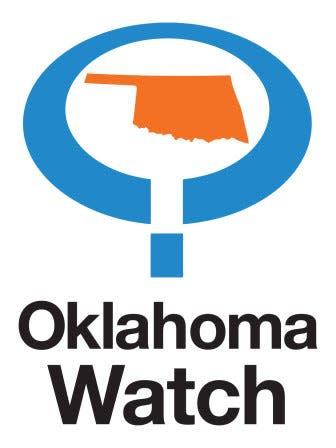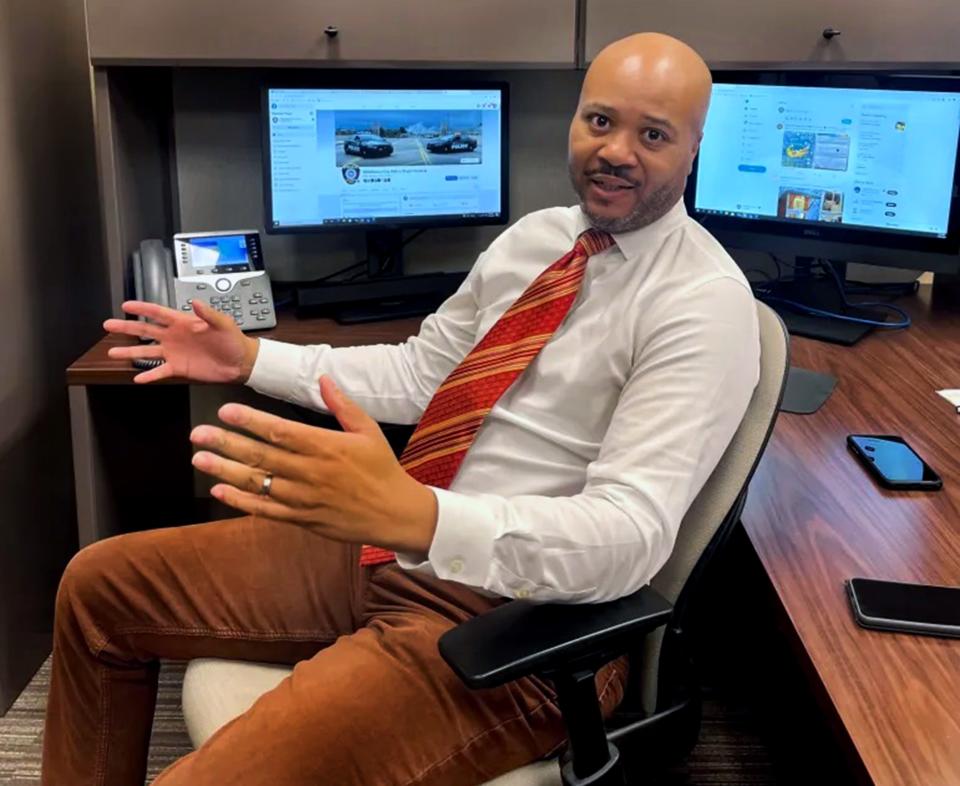Oklahoma City Police Department's crowd-sourced effort can exploit accused
When a 67-year-old man reported a clothing theft in September, Oklahoma City police turned to crowd-sourced crime solving.
“This person stole clothes from a laundry room in the 1200 block of N. Kate,” a public information officer declared in a Facebook post that included a grainy surveillance image of a woman in a strapless top walking empty-handed in the Jeltz Senior Center.

Larceny is a misdemeanor punishable by six months in county jail and $500 in fines. Facebook users shared the post 207 times — once into a group called “Wanted Fugitives” — and added 505 comments. Among them:
“Lowest form of human to steal clothes from a laundry room. Get some ethics to live by like…thou shalt not steal.”
“Stealing is still a crime regardless of the circumstances. No excuses.”
“I hope that included a bra.” That inspired 91 reactions. More than half were laughter emojis.
Not every commenter was amused.
“This is not what we’re paying you for,” wrote one man, “now get to doing some real work.”
Oklahoma City police insist these posts do indeed work, citing 155 solved cases this year through September.

Yet, two-thirds of its posts that month featured nonviolent offenses such as shoplifting, porch piracy and vandalism, according to an Oklahoma Watch review. In most cases, the phrasing implied guilt before an investigation is completed.
Oklahoma County’s chief public defender said the department’s methods can harm those featured as they seek justice or a livelihood.
“They’re bullying the person whose picture is allegedly in it,” said Robert Ravitz, who has represented the accused who cannot afford private counsel since 1987.
Although they don’t track how many lead to arrests, OKC officials credit posts like the stolen laundry report with dramatically increasing their social media following and engagement.
While other state law enforcement departments maintain an active presence on social media, their methods differ. A majority of the Tulsa Police Department’s Facebook posts in September sought the public’s help in solving violent crimes. Even those posts included a disclaimer: “These are arrests, not convictions.”
In Lawton, only felony offenses are shared and posts are removed after an arrest.
“Citizens have answered for the crime,” said Lawton police detective Ken Dickson. “They don’t need their face plastered there for years.”
Angie Dean said she can relate to the stigma and humiliation.
After being discharged from the Air National Guard, Dean said she experienced Post Traumatic Stress Disorder that started a cycle of addiction. She was fired from her job as a bookkeeper for a local roofing company when her boss saw her mug shot featured in the magazine “Just Busted,” following a 2020 arrest for trafficking methamphetamine and possession of a firearm while committing a felony.
“It’s one of those things that kind of leaves a mark on you like you’re just trash,” said Dean, a 46-year-old mother now studying through American Military University after graduating from the veteran’s drug court this fall with her charges dismissed.
Police mug shot galleries were once commonplace for news websites and prolific traffic drivers. Though they remain public documents, many news outlets have reconsidered their use, citing the lasting impact on those whose image from their worst day is frozen in an online gallery. State legislatures and police departments have reconsidered their use.

The San Francisco Police Department releases mug shots to the public only in cases where the accused is deemed a threat to society. A 2021 California law prohibits law enforcement agencies from sharing mug shots on social media for nonviolent crimes.
With Crime Stoppers segments no longer a staple of local television news, Sgt. Jennifer Wardlow said Oklahoma City police have taken the reward-for-anonymous-tip initiative to social media.
“The advantage of having social media is that we control the message that goes out so we can put more content out if we have more cases that we need help with through Crime Stoppers,” said Wardlow, who filters the tips and decides what goes on social media. “We’re able to put that stuff out on a more regular basis without having to depend on a media outlet.”
The department’s social media specialist, Mark Myers, is a former television reporter who once specialized in crime coverage. Myers said Oklahoma City’s 354,000 Facebook followers are the third-largest among U.S. police departments and Crime Stoppers posts are “the No. 1 engagement piece.”
“You look at September, and the number of page likes (and) people who followed us was almost 4,100,” Myers said. “For that month, it was up 65%.”
That month, the department’s post featuring a northwest Oklahoma City home camera image of someone removing a Dallas Cowboys pennant from a flower bed stand inspired 625 shares and 804 comments.
“Today it’s a small garden flag, tomorrow it’s a car or robbing a bank,” wrote one commenter.
On Sept. 30, the department published a photo of a woman wearing an N95 mask and carrying unbagged items out of a beauty store. “It wouldn’t be a Friday without giving you a dose of Ulta theft!” said the post, which inspired 500 shares and 389 comments.
Although the department’s September incident posts were primarily nonviolent, some included assault, burglary, homicide, stealing a car and robbery by gunpoint. Myers said they post nonviolent offenses because crimes could be elevated to violent offenses and all crimes have a victim. The Crime Stoppers logo and an animated label of “identified” accompany reshared or updated posts when the department considers a crime report solved.
Myers said the language he uses on Crime Stoppers posts differs from what he used reporting on crime for TV news because officers reviewed the footage.
“You’re seeing the person actually stealing. It’s all on video of the person taking it. As a reporter, we always say accused, but we’re actually the agency going in and looking at somebody going in and grabbing that jewelry,” he said.
A Rutgers University professor who studies the intersection of criminal law and technology considers such posts “digital punishment” resulting from mere suspicion or brushes with the law. Their spread on social media can have lasting harm to the accused and impede justice, said Sarah E. Lageson.
“It just goes against what sort of public shaming is appropriate for what level of offense and I think public opinion showing that people are increasingly worried about crime,” said Lageson, author of a book titled “Digital Punishment: Privacy, Stigma, and the Harms of Data-Driven Criminal Justice.” “I don’t know that putting someone’s pictures online to identify somebody to open a huge investigation for a minor crime is the best use of police resources.”
Myers said Oklahoma City’s posts are updated and reshared, but removal is too time-consuming.
Lageson said police departments should be more responsible with social media.
“These posts seem to represent a departmental goal of producing internet content. The motivations are unclear, but the emphasis on these very minor, clickbait stories might distract the public from more serious unsolved crimes, actual public safety threats, or critical public oversight needed to monitor the police effectively,” Lageson said.
“The departmental choices to post these stories that seem obviously likely to solicit jokes, teasing, or even overtly harmful comments — and subsequent likes and shares — is really a social media strategy to gain followers — and not part of effective community policing.”
Oklahoma Watch, at oklahomawatch.org, is a nonprofit, nonpartisan news organization that covers public-policy issues facing the state.
This article originally appeared on Oklahoman: Are accused exploited by OKC police's social media campaigns?

